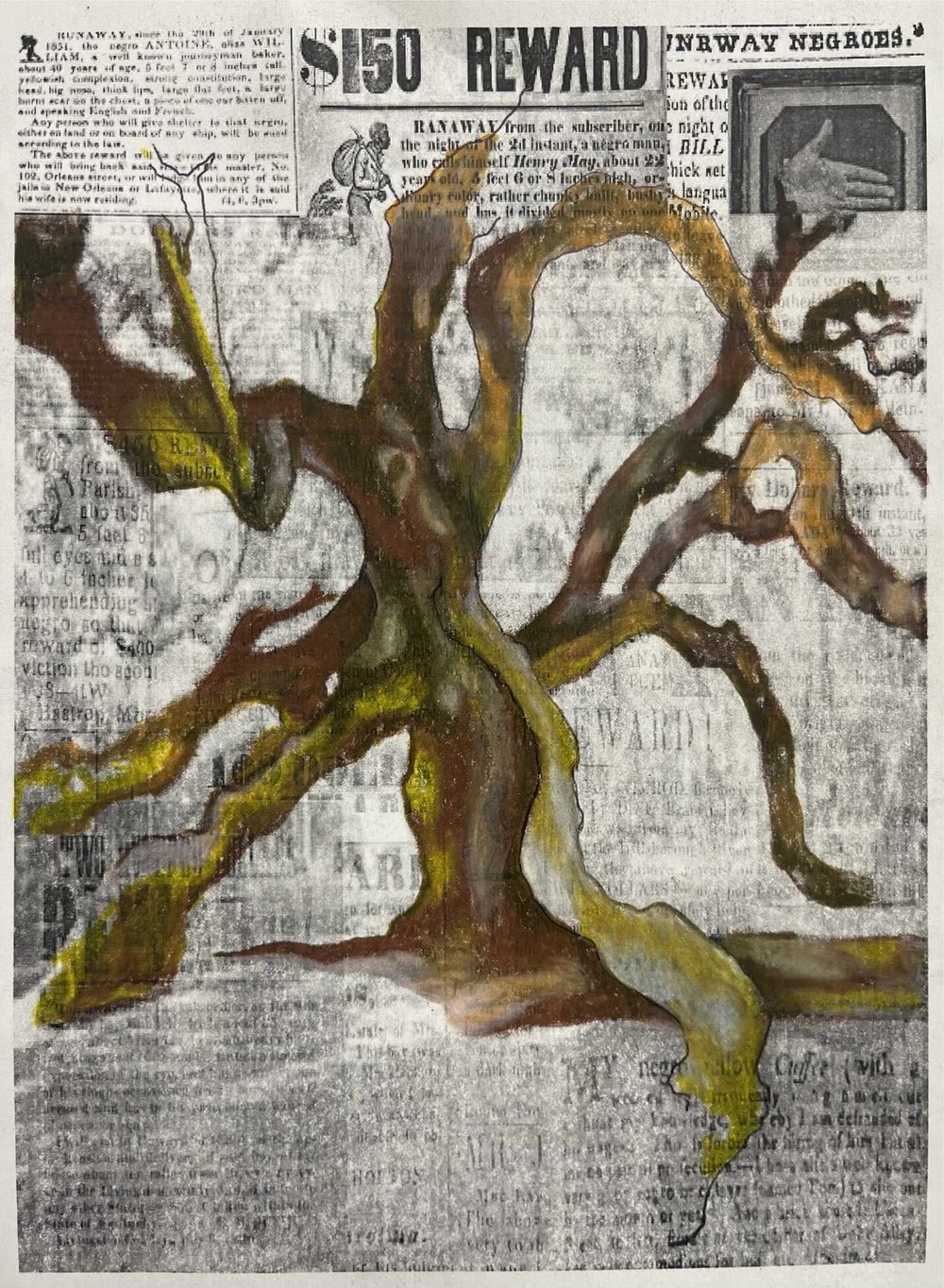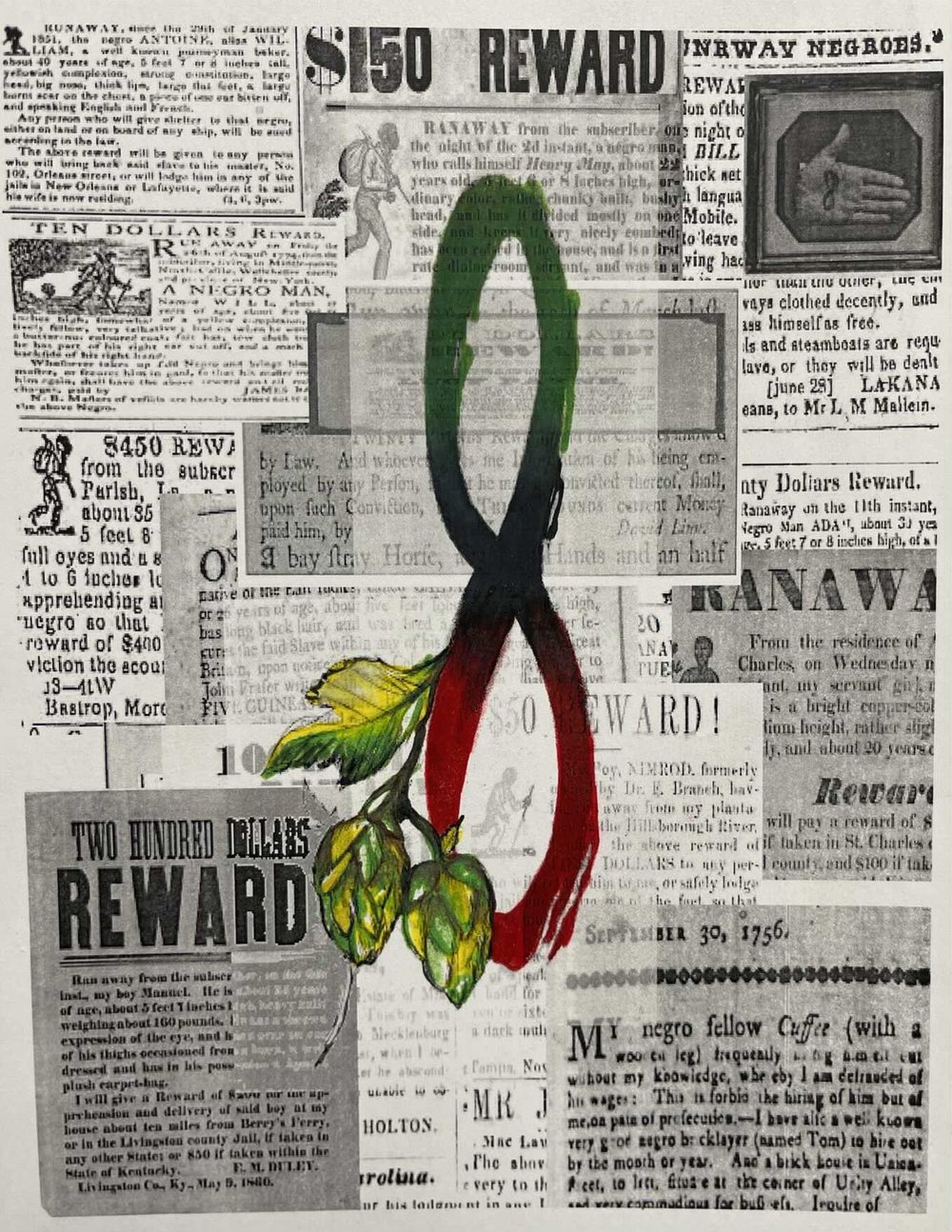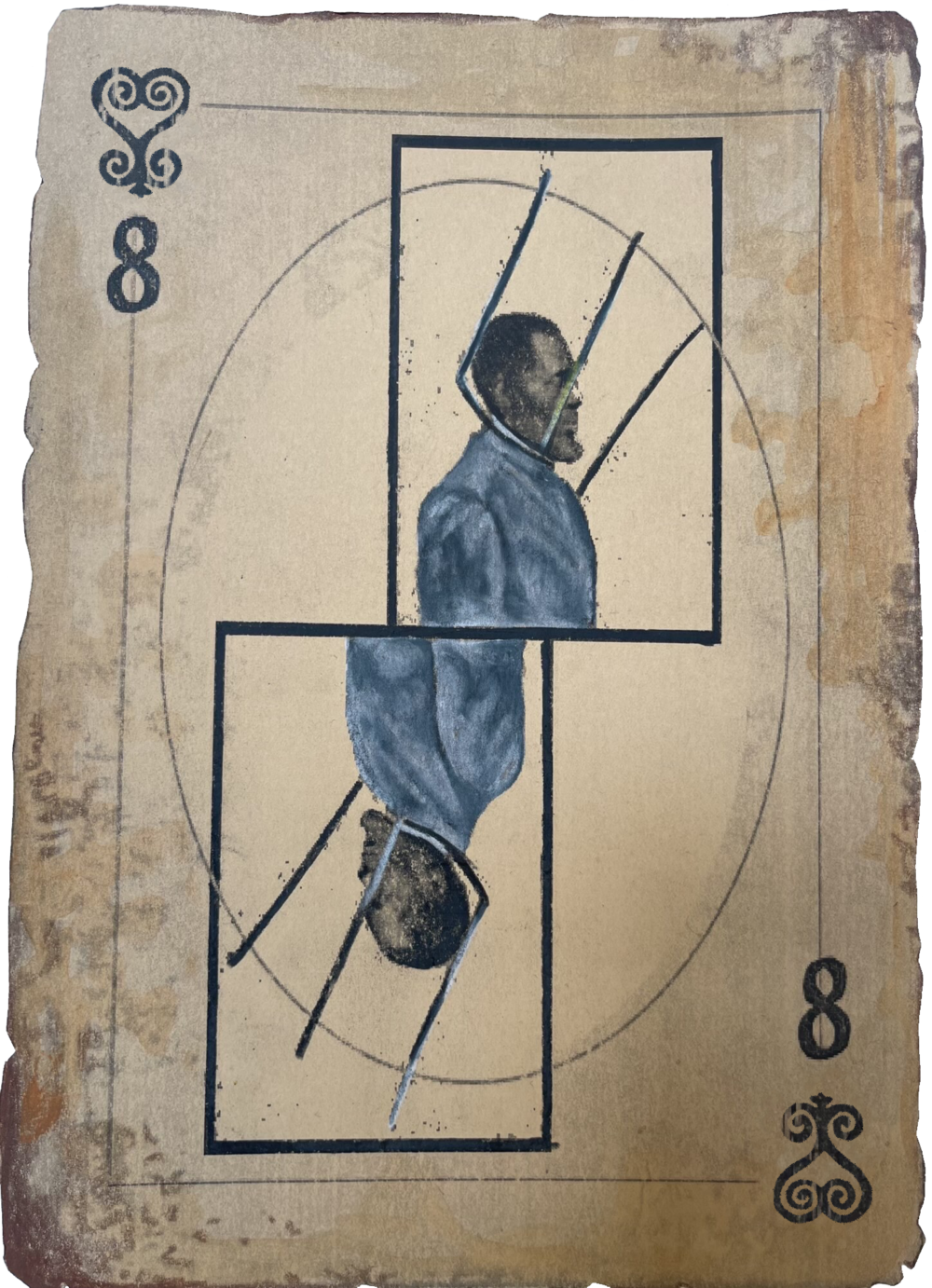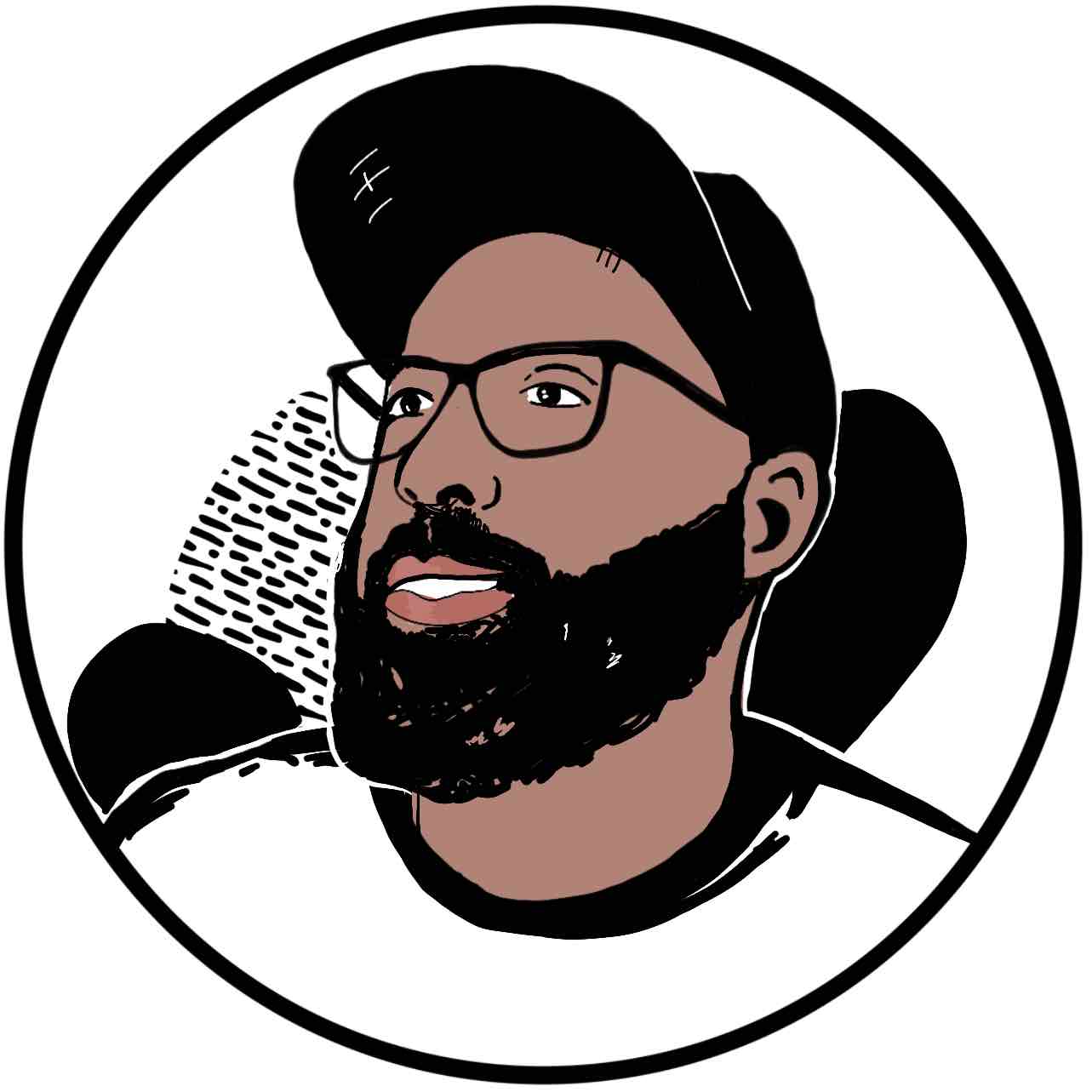
“The BREW-HOUSE is now, and will (for the future) constantly be supplied with good TABLE BEER; and those who may be pleased to send their orders, will be punctually served, by Their humble Servant, Edmund Egan.”
So went Egan’s advertisement in the South Carolina Gazette in November 1772. Referring to himself as a servant was part of 18th-century decorum, but it wasn’t accurate. By then, Egan likely had his own “servants,” or rather enslaved Black brewers, filling orders for him.
AUTHOR’S NOTE
This article benefited from research and writing assistance from Jamaal Lemon, Mike Stein, and Peter Jones. This exploration of Charleston’s marginalized beer history accompanies the release of 8 and All—a collaboration beer between Edmund’s Oast Brewing Company, Good Beer Hunting, and the editorial team—during Charleston Beer Week 2021, as well as “That Dog Won’t Hunt,” a podcast episode exploring this overall project and its potential implications for beer’s past, present, and future in Charleston.
Egan took out a different kind of ad several years later. In the summer of 1778, he decided to sell his Charleston, South Carolina brewery and retire. Along with a sizable brewery and malthouse on Magazine Street (in central Charleston, both then and today), Egan offered up “15 Negroes,” among them “2 good coopers, lately purchased, 6 men [brewers] bred to the trade, two House Wenches and handy boys and girls.”
In other words, Egan’s brewery ran on enslaved Black labor, and Egan’s only known public acknowledgement of their existence appeared in his final attempt to profit from them.

We mentioned these brewery workers in “Tek Cyear uh de Root,” a three-part series on the Charleston Schützenfest published last summer, and added that we couldn’t find any record of their names. We’ve searched again since and have still found nothing concrete. Even if an overlooked scrap of paper in an archive identifies these people to us someday, virtually all of their contributions to Charleston and American beer history have been erased by the white filter of our source material. The only way to learn anything about their involuntary journey through Charleston’s early brewing history is to read that material against the grain.
We seek to share that story with the help of 8 and All, a collaboration beer with Edmund’s Oast Brewing Company that debuted Nov. 4 as part of Charleston Beer Week, with proceeds benefiting a local charter school. This article will focus mostly on reframing Egan’s history, but you can learn about 8 and All, its purpose and provocative artwork, and the beer release on the event webpage, as well as Episode 005 of the Source Material podcast.
The difficulties involved are why historical study is an exercise in interpretation over rote recollection. Archival tyranny, scholarly bias, and lies of omission often depend on uncritical repetition to survive.
But let’s pause. Edmund Egan … Edmund’s Oast … yes, there’s a connection. Egan’s story served as inspiration for naming Edmund’s Oast, and for a long time the brewery touted Egan’s legacy as Charleston’s elder brewer on its website. After reading “Tek Cyear uh de Root,” the brewery reached out for a conversation about Egan, its name, Charleston’s beer history, and worked with us to help correct that narrative.
Egan’s participation in slavery wasn’t totally unknown to brewery leadership. But the historical sources they drew from had stated the fact so quietly—when it was mentioned at all—that slavery’s role in the story became hidden in plain sight. Overlooking it is not excusable, but the sin was not theirs alone, either. Records are every historian’s best frenemy—unreliable narrators often calcify generations’ worth of biased perspectives, grinding axes, and conflicting stories. Interrogating sources to glean every bit of useful information—especially things that previous authors attempted to hide—requires practice and skill. The difficulties involved are why historical study is an exercise in interpretation over rote recollection. Archival tyranny, scholarly bias, and lies of omission often depend on uncritical repetition to survive.
So when we began talking about Egan’s story, we committed to revisiting instead of repeating. Here’s what we’ve found, and what we’re doing.
THE HAND WE’RE DEALT
This story may not be about Egan, but unfortunately, our best way of exploring the lives of Charleston’s earliest-known Black commercial brewers is through records left by their oppressors. The basics are that Egan emigrated from England to Charleston sometime around 1762. He probably had prior training as a brewer. Egan struggled to get his brewery off the ground, most likely because he lacked funding and because it was difficult to source ingredients (barley and hops weren’t widely cultivated in South Carolina in that time period). There was certainly a local market for beer—Charleston consumed its fair share and then some in the mid-1700s—but the majority of commercial beer was imported from Philadelphia, New York, or England.

Egan launched his brewery in the spring of 1766, with the help of a business partner named John Calvert and a big-time local merchant named Henry Laurens—more on them later. Selling “strong and mild beer” as well as “table and small beer,” Egan and Calvert tried to navigate repeated economic and political fights between the North American colonies and England, preambles to the American Revolution. They failed. The brewery went up for sale in November 1768 and wound up under Calvert’s sole proprietorship. That didn’t take, either: Calvert put the brewery up for sale again in early 1770 and, with the help of some “Gentlemen of Fortune,” Egan wound up in sole control of the brewery.
The next few years were good to Egan, whose brewery likely became the largest in South Carolina. He expanded his operation on Magazine Street and worked to solve his supply chain woes by providing barley seeds to local farmers. He sold spruce “double beer” and Ale to housewives, ship captains preparing for long voyages, and tavern-keepers, many of whom preferred his “Carolina beer” to varieties imported from northern colonies. There’s every indicator that business was booming right up until Egan decided to sell and retire in 1778. He even used his profits to help finance the Continental Army (the British tried and failed to invade Charleston in June 1776). But at some point during those 12 years, while Egan and other wealthy slaveholders were bankrolling a revolution predicated as much on safeguarding their hold on human chattel as instilling freedom for the colonies, his brewery came to operate on enslaved labor.
But what did that labor look like, and when did Egan first exploit it? What can we learn about the lives and identities of Charleston’s earliest-known enslaved brewery workers when we interrogate Egan’s life more closely?
Egan’s financial situation, unstable initial business growth, and small early operation suggest that enslaved brewers weren’t there from the beginning. We have to extrapolate when and how they might have come into their circumstances. One hypothesis is that Egan acquired enslaved labor through his closest business partners, John Calvert and Henry Laurens.
In addition to his stake in the brewery, Calvert worked as a lawyer. He helped the families he represented track down escaped slaves. Eventually he enslaved at least three people himself: an unnamed woman in her 20s with two young sons. But it’s unclear when that happened, or whether they would have worked in the brewery. Like Egan, the only evidence we have of the Black Charlestonians Calvert enslaved is a sale ad from 1772, when he had a “real want of cash.”
But at some point during those 12 years, while Egan and other wealthy slaveholders were bankrolling a revolution predicated as much on safeguarding their hold on human chattel as instilling freedom for the colonies, his brewery came to operate on enslaved labor.
Henry Laurens was a prominent merchant, slave trader, and planter. He was one of the larger importers of beer to Charleston, and had opinions about which regions of West Africa were better than others for supplying enslaved captives. He was also one of South Carolina’s delegates to the Second Continental Congress, which adopted the Declaration of Independence (but not before removing a proposed section condemning the slave trade as an “assemblage of horrors”). Laurens regularly facilitated shipments of ingredients and other brewing materials on Egan’s behalf, and if anyone in Charleston would have known where to find enslaved people trained in brewing, it was him. This is just speculation, however—we found no records to confirm or deny Calvert’s or Laurens’ involvement in helping Egan find enslaved labor.
LEARNING THE TRADE
Even without clear answers, we’re led to another question: Where might Black Charlestonians at this time have learned how to brew English-style Ales? The obvious possibility is that Egan, a trained brewer himself, taught the six Black brewers that he eventually enslaved, but there’s a complication there. Egan’s ad lists those six brewers as “bred to the trade,” and that’s a loaded phrase.
According to historian Philip Morgan, enslavers periodically used the dehumanizing language of “breeding” to describe enslaved people who were singled out for training in specific skills, ranging from trades to domestic work. Such instruction could begin anytime between infancy and one’s early 20s, but in trades, it was most common for enslaved boys to be placed in “apprenticeships” between ages nine and 11. If the Black brewers who worked for Egan had learned their trade in this fashion, there are a few ways it might have happened. Egan may have purchased six adolescent boys in the early 1770s, perhaps with help from slave traders like Laurens, and trained them all himself. That’s a straightforward possibility.

But Egan’s wasn’t the first or only game in town. Despite importing so much beer, Charleston was home to a commercial brewery as early as 1752, and another Charleston brewery operated alongside Egan and Calvert’s as early as 1767. It’s unknown whether these operations exploited enslaved labor, but it’s hypothetically possible that a Black brewer could have learned the trade in these environments.
Black brewers might also have been trained in the South Carolina countryside. Just like the better-known example of Peter Hemings, the enslaved Black brewer at Thomas Jefferson’s Monticello estate in Virginia, there is evidence of plantations outside Charleston (and, surprisingly, a large commercial sawmill in western South Carolina) maintaining brewhouses of their own. A more far-fetched alternative is that they trained in some northern brewing center like Philadelphia or New York, where slavery was still quite legal at the time.
It’s just as possible that Egan simply lied when he listed those brewers as “bred to the trade,” that he taught them in adulthood but thought he could get more money by saying otherwise. We don’t know. But by 1778, Egan also enslaved two coopers, described as “lately purchased.” Coopering was more common for enslaved tradesmen in Charleston, so there’s less ambiguity about where they may have come from. In fact, a June 1777 ad in Charleston newspapers sought “one or two Negro coopers” to work at a “Brew-house.” Egan isn’t named, but the timing is too well-aligned to ignore.
FORCED LABOR
Another way to better understand the obfuscated Black presence in Egan’s brewery is to explore what actual labor would have been performed. We know what products were made and what kind of facilities and equipment Egan owned. General information about typical brewing practices in the 18th century can give us a reasonable picture of what the enslaved brewers and other workers would have done to maintain the reputation Egan took credit for.
To piece this picture together, we asked two historians and experts on early American brewing technology: Kyle Spears of Carillon Brewing Company in Dayton, Ohio, and Frank Clark of Colonial Williamsburg, Virginia.
First, the raw facts: Egan’s brewhouse contained two large coopers “large enough to supply the State.” There was also an adjacent three-story malthouse containing cast-iron rollers (modern technology at the time), capable of grinding 100 bushels of malt per day. The brewery also retained three drays (delivery wagons), four horses, his current inventory of beer, 8,000-10,000 staves (lengths of wood used to make barrels), and “extensive” bottling capacity. Back-of-the-napkin math suggests those staves alone, once built into barrels, could hold anywhere from 2,500 to just under 10,000 gallons of beer at any given time, on top of the other inventory and bottles that went unquantified in the ad. In short, the brewery was equivalent in size to a lot of contemporary craft breweries. There was a lot of work to do, with no digital flow meter, no thermostats, and no electricity.
Spears’ and Clark’s first-hand experiences make it clear that 18th-century brewery work was grueling. Water had to be drawn from an on-site pump, then hauled. Wood needed to be chopped, then fires beneath the kettles tended. Someone also had to transfer malt (both wet and dry), wort, and finally beer among heavy wooden tubs. Even when beer wasn’t being produced, those same tubs needed meticulous maintenance. Leave them empty for too long and they’d fall apart. Leave them filled with water and they’d mold. Then there was the coopering work—all those staves were built into barrels or casks for distribution. It’s likely these were broken down and returned to the brewery to be rebuilt again. After that, beer needed to be moved, stored, loaded, and delivered.
In addition to the eight brewers and coopers, two women (referred to as “house wenches”) were named in the ad. Their description suggests a kind of maintenance role in the brewery, possibly including some of the chopping, pumping, caring for horses, and other indirect labor necessary to keep the brewery going.
Bottles were filled by hand at this time, which involved scrubbing, filling, and corking. Unfortunately, the bottling arm of Egan’s operation was probably the reason five “handy boys and girls” appeared in his sale ad. Child labor was used in beer-bottling into the early 20th century.
Those workers’ involvement in the brewery is why we named our collaboration beer with Edmund’s Oast “8 and All.” Those we admire in the beer community have begun to seek out and acknowledge the many Black contributions to American brewing history, and we stand with their efforts to honor those whose stories have been suppressed in the record. Egan’s brewery wasn’t operated just by the six brewers and two coopers he enslaved. To stop with them is to again stop short of writing ethical history. There were more contributors to American beer history than we thought, more still than we now know, and likely more than we will ever fully understand.
FORGET IT, IT’S CHARLES TOWN
In our pursuit of 15 Black names—or even one—to reinsert into Charleston’s early brewing history, we did find eight: John, Lancaster, Sandy, Kate, Sylvia, Jemmy, Betty, and Aleck. They were the enslaved people named in Egan’s will when he died in 1787, years after he sold his brewery. It seems unlikely that any of these eight worked in the brewery themselves, most obviously because we know Egan actually went through with the sale (it’s not listed among his property in the will) and offered his enslaved workers with it when he did. We don’t know the final terms of that transaction; it’s possible that not all 15 people remained tied to the brewery, but at least some of them must have.
And of the eight we can name, it seems none were brewers or coopers. Egan’s widow later put them all up for auction, listing the men (presumably John, Sandy, and Lancaster) as two sawyers and a laborer; the women (presumably Kate and Sylvia) as cooks, washers, and ironers; and three children (presumably Jemmy, Betty, and Aleck) ages 10 and under. The children, of course, would have been too young to participate in the brewery.
The gaps in our knowledge raise so many questions. Were either Kate or Sylvia one of the women we know worked in the brewery? Had John, whom the will says had “remained faithful” to Egan for most of his life, been there during its operation? Could he perhaps have been an adolescent boy Egan “bred to the trade” after reacquiring the brewery in 1770? Or else a child forced to fill bottles?
And what of the rest? Did Egan sell off enslaved brewers to work for one William Hornby, who we know ran a different brewery on King Street around 1781? And when Egan’s original Magazine Street facility reopened in 1787, now owned by a Pennsylvania transplant named James Gregson, were any of those enslaved workers still operating it? We are naturally tempted to slot names into roles we know, but it’s all speculation. We don’t have clear answers, and we may never get any. This part of their legacy remains denied by the remnants of slavery.
OUR COLLECTIVE ROLE
Even with so many unknowns, reframing the story of Egan’s brewery to be one of enslaved labor helps us better understand Charleston’s beer history as one of overlooked oppression. And that acknowledgment is helping Edmund’s Oast rediscover its own namesake.

Leading up to its opening in February 2014, the nascent brewpub’s founders wanted a name that evoked a sense of history and connected them to Charleston as a whole. Scott Schor, a co-founder and a managing partner at Edmund’s Oast, tells us on our podcast that Egan came up during this naming process. But the story they’d heard was “very romanticized,” the tale of a so-called “rebel brewer” who made the best beer South Carolina had ever tasted, and lent his profits to the American revolutionary cause. Their main sources for this narrative mentioned Egan’s enslaved workforce, but in brief and frankly misleading terms—single sentences saying Egan “employed” these Black brewers, or that they were “on the proverbial payroll.”
One of those writers was Timmons Pettigrew, who published “Charleston Beer: a High Gravity History of Lowcountry Brewing” for The History Press in 2011. He joined Edmund’s Oast in 2017 and today is the director of group operations. Pettigrew says he took on the project without a background in writing or training in history, and so the book covers Egan and race in the same problematic ways as previous renditions. He mentioned slavery briefly, but ultimately repeated those omissions and misrepresentations that led readers to neglect its significance.
“In retrospect, that’s a perfect example of the whitewashing history problem we’re grappling with here,” Pettigrew told us via email. Likewise, Schor acknowledges the idea of a wealthy Charleston manufacturer like Egan exploiting slave labor was an “obvious potential connection” that Edmund’s Oast’s founders overlooked. And that oversight came from a place of white privilege.
“You realize, ‘Well, I could have put this together sooner than that.’ But alas, that’s not the way it happened,” says Schor. “It goes without saying that if we knew everything then that we know now, of course we wouldn’t have used part of his name in naming our business.”
Even with so many unknowns, reframing the story of Egan’s brewery to be one of enslaved labor helps us better understand Charleston’s beer history as one of overlooked oppression. And that acknowledgment is helping Edmund’s Oast rediscover its own namesake.
Schor says he only really began grappling with Egan’s full history—rather than the inadequate “whitewashed … comfy and convenient” narrative—in the past year or so. “This was just another layer unfolding in front of our eyes of things that we were self-imposed blind to because of the way that white people have lived their lives in this country,” he says.
Releasing 8 and All during Charleston Beer Week is one small way to shine a light on these blind spots, not only in Edmund Egan’s story, but within the context of the current inequities pervading American beer, their suppressed historical foundations, and the social amnesia necessary to rationalize it all.
“8 and All is not a beer for beer’s sake. It is an art piece created to invoke emotion and conversation,” says Jamaal Lemon, who wrote the original Tek Cyear uh de Root series and has crafted 8 and All’s vision from the start. “Like [Israeli author and public intellectual] Yuval Harari has said, experiences are integral to our inner journeys from ignorance to enlightenment. We’re hoping 8 and All can inspire and facilitate some of those experiences.”
Of course, collaboration beers can easily become a superficial way to promote causes—brew a beer, raise ambient awareness, and everyone pats themselves on the back while nothing changes. That’s why the beer itself shouldn’t be the goal. Just like drinking for its own sake can be a pathway to personal oblivion, producing a beer like this for its own sake leads to nothing. Conversation must be the goal. Change must be the goal.
Those conversations are as hard as they are necessary, particularly in a city with Charleston’s history. “Nobody ever wants to be told that they are the worst thing that’s ever happened to a group of people … So how do you have a conversation where you’re not just pointing a finger at somebody and saying, ‘You’re a piece of shit because of what your grandfather did to me?’” Rodney “Buck” Herring, who designed poster art for the Tek Cyear uh de Root Festival in Charleston, tells our podcast. “As soon as you tell somebody there’s a problem, they shut down … We want to get past the shutdown and move forward and move past that.”
No beer can come close to doing that. Our only hope is that it becomes one effort among many. “This is just beer and we’re just a brewery,” says Schor. “You know that’s not lost to me, but this needs to become infectious. This needs to take place in every type of business, in every institution.”
As we covered in Tek Cyear uh de Root’s third installment, Gullah Geechee culture’s massive influence on Charleston cuisine has made food a contested space to celebrate local Black heritage. And many Charleston residents—such as Black Food Fridays founder KJ Kearney, who’s quoted in the piece—are doing that work every day. For breweries like Edmund’s Oast, pushing harder within their own spaces is a simple step down a road that others are paving.
Johnny Caldwell and Taneka Reaves are among them. Also known as the Cocktail Bandits, the two have eagerly championed Charleston’s growing beer scene for over eight years, especially to prospective Black drinkers. “We definitely have been encouraging people who are not familiar with beer, who say that they don’t even like beer, to go to these spaces and to enjoy a flight of something they haven’t tried before,” Reaves tells our podcast, adding: “We want to encourage people of color, especially women, to get involved in food and [beverage], that you can have a career in this industry that is not just about pouring the beer off of the draft. But, you know, there’s production. There’s skills. There’s distribution. There’s just so much that goes into the industry that we’re not thinking about that we want to expose to a larger audience.”
In recent conversations, the Edmund’s Oast team has stressed that they want more people of color to apply for open positions in their brewery, and to feel included in their spaces. Investigating Edmund Egan with us wasn’t the first step they’ve taken toward that goal, and it certainly won’t be the last. Among the thousand or more steps that are needed, 8 and All is one way to help correct Charleston’s slanted beer history. Each conversation inspired by it, each action reconsidered, and each mind changed could be another. And every step is worth it.


Words by Brian Alberts
Event by Jamaal Lemon + GBH Studio
Illustrations by Damion Johnson